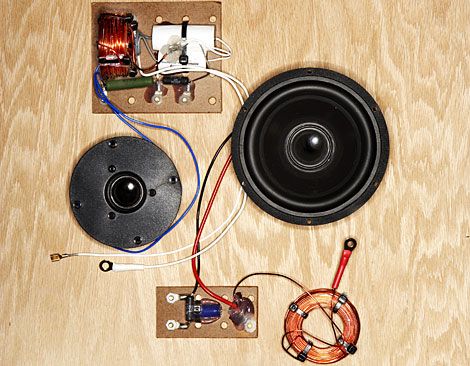

- #Speaker enclosure design home hi fi driver
- #Speaker enclosure design home hi fi portable
- #Speaker enclosure design home hi fi free
In loudspeaker operation, the coil moves due to a current that’s applied to it, according to the Lorentz Force Principle. As the current changes, the back-and-forth motion of the coil is transferred to the cone, producing longitudinal waves of sound.ģ. Since the coil is in a magnetic field, a current applied to the coil moves it according to the Lorentz Force Principle (Fig. A flexible mount (the spider) centers the coil assembly in the gap. The loudspeaker frame secures the cone at the larger end.
#Speaker enclosure design home hi fi free
The coil assembly is positioned between the poles of a permanent magnet and is free to move in the axial (y) direction. It consists of a cylindrical coil connected to a cone made of paper or a composite material.

To understand why this technology produces better sound, let's first take a quick look at moving coil speaker construction. A typical loudspeaker comprises a cylindrical coil connected to a cone consisting of paper other composite material. The algorithm uses a combination of the speaker model, psychoacoustics knowledge, and a user-selected target response.Ģ. Smart Bass: Automatically adjusts the bass response to accommodate for larger excursions when there’s increases in signal amplitude. Protection: Models the current state of the speaker to adaptively change amplifier characteristics to avoid over-temperature and over-excursion. Smart Sense: Provides system and system-level sensor inputs such as temperature, speaker voltage and currents, supply voltage, etc. Smart SOA: Establishes the boundaries of maximum speaker diaphragm excursion and voice-coil temperature during operation based on an electromechanical-thermal model. Smart EQ: Automatically modifies high frequencies to deliver a flat response or match a target curve.

Unlike a pure analog solution, a smart amplifier incorporates several DSP blocks (Fig.
#Speaker enclosure design home hi fi portable
As a result, designers are able to make big improvements in both the quality and volume of sound from speakers, particularly from the very small and cheap units used in many portable devices.Ī smart amplifier can prevent mechanical or thermal failures while simultaneously boosting output and improving audio quality.
#Speaker enclosure design home hi fi driver
In recent years, though, a new generation of "smart amplifiers" is incorporating new driver topologies and digital-signal-processing (DSP) technology. The same applied to techniques for driving them, at least until recent improvements such as Class-D amplifiers. Sadly, there isn't a Moore's Law for speakers. After that initial breakthrough, speaker performance showed only incremental improvement for many years. In the midst of this rapid change, every smartphone and laptop still depends heavily on an invention that's remained substantially the same for over 90 years: the moving-coil loudspeaker, first patented in 1925. And, of course, every succeeding generation is thinner than the last. Desktop PCs become laptops and then tablets. One consumer-electronics trend that shows no signs of slowing down is the drive toward ever-smaller devices.


 0 kommentar(er)
0 kommentar(er)
